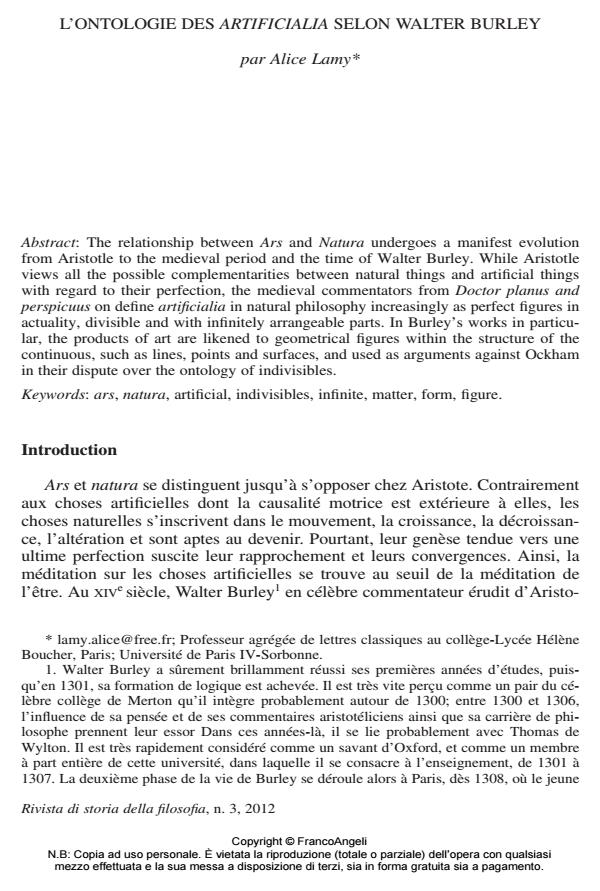L’ontologie des artificialia selon Walter Burley
Journal title RIVISTA DI STORIA DELLA FILOSOFIA
Author/s Alice Lamy
Publishing Year 2012 Issue 2012/3
Language Italian Pages 21 P. 471-491 File size 515 KB
DOI 10.3280/SF2012-003002
DOI is like a bar code for intellectual property: to have more infomation
click here
Below, you can see the article first page
If you want to buy this article in PDF format, you can do it, following the instructions to buy download credits

FrancoAngeli is member of Publishers International Linking Association, Inc (PILA), a not-for-profit association which run the CrossRef service enabling links to and from online scholarly content.
The relationship between Ars and Natura undergoes a manifest evolution from Aristotle to the medieval period and the time of Walter Burley. While Aristotle views all the possible complementarities between natural things and artificial things with regard to their perfection, the medieval commentators from Doctor planus and perspicuus on define artificialia in natural philosophy increasingly as perfect figures in actuality, divisible and with infinitely arrangeable parts. In Burley’s works in particular, the products of art are likened to geometrical figures within the structure of the continuous, such as lines, points and surfaces, and used as arguments against Ockham in their dispute over the ontology of indivisibles.
Keywords: Ars, natura, artificial, indivisibles, infinite, matter, form, figure.
- Paul of Venice’s metaphysics of artefacts Kamil Majcherek, in British Journal for the History of Philosophy /2020 pp.29
DOI: 10.1080/09608788.2019.1588703
Alice Lamy, L’ontologie des artificialia selon Walter Burley in "RIVISTA DI STORIA DELLA FILOSOFIA" 3/2012, pp 471-491, DOI: 10.3280/SF2012-003002